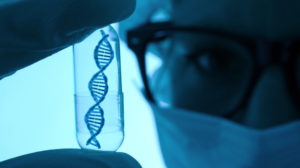The number of people above the age of 60 years is growing worldwide and that number is projected to triple by the year 2050 [1]. Aging is the predominant risk factor for the majority of diseases and conditions that limit lifespan. And is broadly defined as the time-dependent functional decline of living organisms.
Aging is characterized by progressive loss of physiological integrity, leading to impaired function and increased vulnerability to death. Numerous premature aging diseases are the consequence of DNA damage accumulation, epigenetic alteration, loss of proteostasis, and telomere attrition.
A major health challenge for the elderly population is maintaining their independence into their later years of life. Functional independence is directly dependent on the physical fitness of an individual, and physical fitness is determined by several measurable health-related characteristics, such as cardiorespiratory health and muscle function [2].
There are nine tentative hallmarks of aging that represent the common denominators of aging: genomic instability, telomere attrition, epigenetic alterations, loss of proteostasis, deregulated nutrient-sensing, mitochondrial dysfunction, cellular senescence, stem cell exhaustion, and altered intercellular communication (figure 1) [3]. Exposing the interconnectedness of these hallmarks and their contribution to aging can lead to improving human health while aging with minimum side effects.
Primary Hallmarks
The nine hallmarks of aging are grouped into three categories. The primary causes of aging are the agents of bodily deterioration. The common characteristic of the primary hallmarks is the fact that they are all emphatically negative. This is the case of DNA damage, mitochondrial DNA mutations and telomere loss, epigenetic alteration, and defective proteostasis [3].
Genomic Instability is a common attribute of aging, and genetic damage accumulates over the course of one’s life and is the major factor leading to various diseases such as Werner syndrome, trichothiodystrophy, and Bloom Syndrome. Epigenetic alterations are of the most notable hallmarks of aging. Your epigenome changes as you age and as a result, precise coordination of gene activity can be compromised. What is promising about this hallmark is that your epigenome can be modified by diet, exercise, additional lifestyle factors, and pharmaceuticals.
Antagonistic Hallmarks
In contrast to the primary hallmarks, antagonistic hallmarks have opposite effects depending on their intensity. At low levels, they mediate beneficial effects, but at high levels, they become deleterious.
This is the case for senescence, which is cell cycle arrest. Cellular senescence protects the organism from cancer, but in excess can promote aging and at chronic high levels can produce cellular damage.
These hallmarks can be viewed as designed for protecting the organism from damage or from nutrient scarcity, but when exacerbated or chronic, their purpose is destroyed and they will generate further damage to the body [4].
Integrative Hallmarks
The third category is comprised of the integrative hallmarks: stem cell exhaustion, and altered intercellular communication, which directly affect tissue homeostasis and function.
Notwithstanding the interconnectedness between all hallmarks, we propose some degree of hierarchical relation between them (Figure 2).
The primary hallmarks are the initiating triggers for damaging events that progressively accumulate over time. The antagonistic hallmarks, which are beneficial in principle, become progressively negative in a process that is partly promoted or accelerated by the primary hallmarks [3].
Finally, the integrative hallmarks occur when the accumulated damage caused by the primary and antagonistic hallmarks cannot be counterbalanced by tissue homeostatic mechanisms. Because the hallmarks co-occur during aging and are interconnected, understanding their exact causal network is an exciting challenge for future work to come [3].

References:
- Exercise Attenuates the Major Hallmarks of Aging
- Quantity and quality of exercise for developing and maintaining cardiorespiratory, musculoskeletal, and neuromotor fitness in apparently healthy adults: guidance for prescribing exercise. Medicine and science in sports and exercise
- The hallmarks of aging
- Aging Hallmarks: The Benefits of Physical Exercise. Frontiers in Endocrinology





